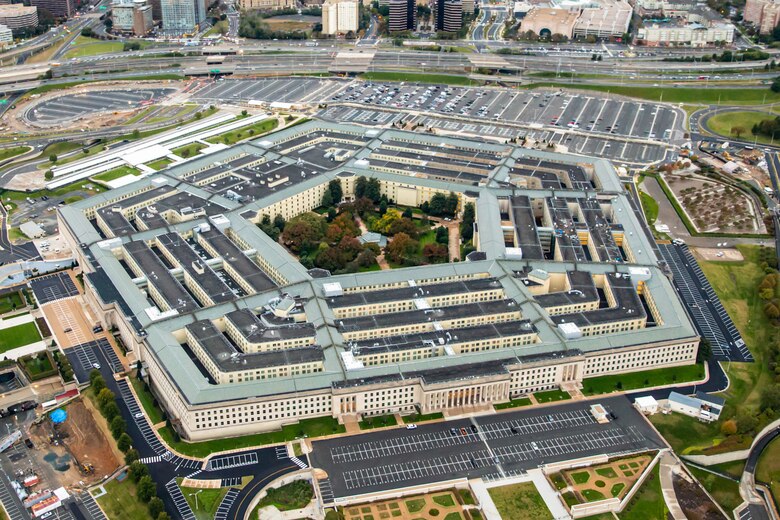The fiscal 2022 Pentagon budget should be three to five percent over last year’s enacted budget to ensure the U.S. military is properly trained and equipped to respond to today’s threats, said Rep. Rob Wittman (R-Virginia), ranking member of the House Armed Services seapower and projection forces subcommittee.
The 2021 defense policy bill authorized $740.5 billion in spending for the Pentagon and other national security programs. President Joe Biden’s budget is expected to include a total of $753 billion for national security, but Wittman’s office said that number really should be at least $762.7 billion to show real growth.
At a separate event, House Armed Services Committee member Rep. Anthony Brown (D-Maryland) said many in his party want cuts in defense, with some Democrats calling for cuts of up to 10 percent.
“That would be devastating, I think, to both readiness and future readiness or modernization,” Brown said during a Center for Strategic and International Studies budget event. “On the other hand, you have Republicans calling for 3- to 5-percent growth above the inflation rate. That’s not going to happen, either. I think where the administration has come in—and what they’re proposing at 1.7 percent” over Trump’s 2021 request of $705 billion for the base defense budget—that increase, he said, is “to address inflation over last year’s level. I think that’s where we’re going to be.”
Brown said he would support increased spending as long as the U.S. is also investing in non-defense programs that also support national security. “If we’re making major investments in defense, traditional defense, and we’re not investing in our workforce, then we may not have the skilled workers to deliver the systems, the programs, the platforms, the facilities, that the Department of Defense needs,” he said. “So I really do think that you’ve got to invest in the workforce, you’ve got to invest in research and development, beyond just the aerospace and defense industries.”
The ’22 request is the first not affected by the 2011 Budget Control Act, which led to sequestration in 2013, the effects of which are still being felt. Aerospace Industries Association President and CEO Eric Fanning, speaking during the same CSIS event, cautioned against another “budget drill,” saying DOD already has seen what happens when you cut too much, too quickly.
“But second of all, it’s decoupled from strategy. Show me a strategy that we can meet with 90 percent of the current budget, and that’s a more interesting conversation,” said Fanning, a Pentagon veteran who has been Secretary of the Army, Acting Air Force Secretary, Undersecretary of the Air Force, and Deputy Under Secretary of the Navy. “You can’t rob Peter to pay Paul. We can’t pay for even a noticeable fraction of what we’re talking about this year, in all of the bills, with a budget exercise with the Department of Defense, [especially when the] department is facing new threats and is participating in all of the crises that we’re going through right now,” including COVID-19 relief support.
Absent the higher topline, “You’re going to have to take out resources, and that’s absolutely unacceptable,” Wittman said. He also expects the services to offer savings and “places where we can avoid duplication” in the defense budget.
Wittman said he’s pushing hard to grow the Navy from 305 ships to “over 400.” He rejected the Navy’s plan to retire some legacy platforms early in order to rebuild capacity later.
“The Navy is looking at things we ought to question,” he said. The number of cruisers the Navy plans to retire would result in a reduction of 1,200 missile tubes, he said.
“How does that get replaced? They say, ‘Wait four or five years, and we’ll get that capacity back.’ … Not acceptable,” he said. He wants a better “transition plan” explaining how the Navy will retain existing capabilities until it has new ones in hand.
Wittman touted the need to expand the Navy’s long-range precision strike capability because it will “create greater degrees of uncertainty for our adversaries, especially the Chinese.” A larger number of ships equipped with such weapons will “create a larger number of scenarios for our adversaries, so they can’t quite predict what we are going to do, or what we can do. We want to elevate the level of uncertainty for our adversaries.” This will “level the playing field” and aid deterrence, he said.
His comments come as the Army also is prioritizing long-range strike, calling itself an “all-domain” force. When asked if now is the time for a new roles and missions review, Fanning suggested that should be an ongoing thing for the Department of Defense.
“Sometimes you want duplication—sometimes competition is good among the services. There probably should be some more, actually. Put the target set in front of them, let them experiment and come back with solution sets, and see where you’re going to invest,” Fanning said. “But, I think a regular review of roles and missions is always a good idea, especially as the strategy has pivoted to great power competition from what we’ve been doing the last couple of decades. I think it’s important to take a look at where we are.”
Editor’s Note: This story was updated at 6:18 p.m. on May 13 to clarify the topline number.
